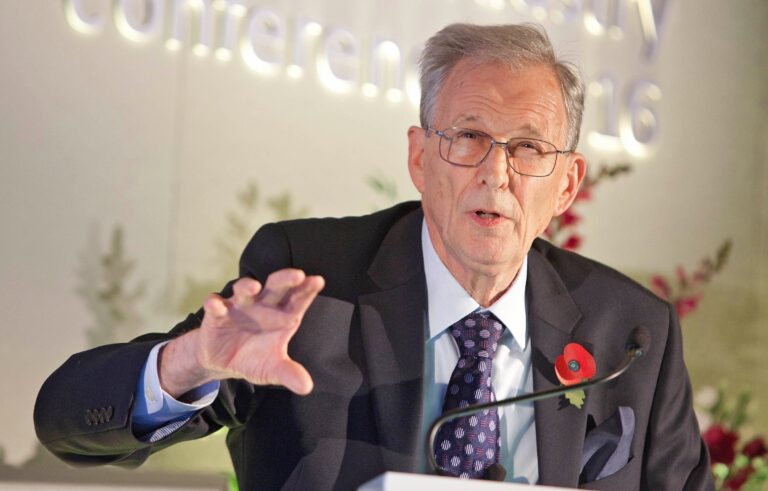Six new members of the poultry industry Hall of Fame were inducted this November. The scheme was launched last year as the project of Derek Kelly, the founder of Kelly Turkeys, and was based on the American Poultry Hall of Fame, which was set up in 1953, and is run by the American Poultry Historical Society.
The scheme recognises accomplishments in the poultry industry and the recipients’ biographies and photographs were displayed at this year’s EPIC.
This year’s recipients are:
Rupert Chalmers-Watson
1911-1977
Rupert Chalmers-Watson has been described as one of the “great pioneers of the British poultry industry” – a “visionary” and the “driving force” behind the early development of the sector.
After visiting the US in the early 1950s and seeing their large scale breeding programmes, he developed Chunky Chicks, and developed a three way cross that delivered good egg production from parent stock and a suitably robust broiler bird for processing.
Rupert was also chairman of the British Egg Marketing Board publicity committee at the time the Lion Egg marque was being developed in the mid-1950s.
He also persuaded Hockenhull Turkeys in Cheshire and J S Lintern in Buckinghamshire, to combine with Fenton Barns to form a new company in 1962, British United Turkeys.
John Maunder
1936 – present
John Maunder came into the family business, Lloyd Maunder, in 1955 and grew the business alongside Sainsbury’s, which was at the time introducing the supermarket concept to Britain and needed large scale suppliers.
Maunder sourced poultry processing equipment from the US, until UK and Dutch manufacturers rose to the challenge, and helped establish a completely new industry. Next came a feed mill, and then a hatchery as, the operation grew and grew. The business was eventually sold to the 2 Sisters Food Group in 2008, by which time it was employing more than 800 staff, and processing 500,000 birds a week from over 150 farms.
Cyril Thornber
1921 – 1991
In1907, Thornber Bros Ltd was born, set up by 19 year old Edgar Thornber, and would go on to become one of the most renowned global names in hatching in its heyday of the 1960s, driven by Edgar’s son Cyril Thornber, who made a huge and lasting impact on the poultry industry.
Cyril joined the business in 1937 and broke ground in a variety of ways, producing hybrid strains of layers from Rhode Island Red males and Light Sussex females. Growing to 1,400 staff and sending up to 2,000 consignments of day-old-chicks per day at its peak, it became the biggest business of its type in Europe, hiring PhDs, professors and geneticists to keep it at the cutting edge.
David Charles
1940 – Present
David Charles became interested in farming after doing a series of farm jobs in the school holidays in the 1950s. After university, he embarked on a PhD in poultry science, funded by a British Egg Marketing Board scholarship.
Early work focused on feed saving for layers, coming at the time of the 1973 global energy crisis and rapid rises in the cost of raw materials. Poultry house ventilation was another speciality.
In 1988, David was involved in the setting up of the poultry museum, which is housed at the Sacrewell Farm and Country Centre near Peterborough, Cambridgeshire.
Dr Percy Blount
1905 – 1968
Percy Blount was born in Derby, England, and graduated as veterinary surgeon in 1928.
A period of private practice, as director of Poultry Health Services, Sussex, he became chief veterinary officer for East Sussex County Council. In 1938 he was awarded a PhD by Edinburgh University.
Joining the British Oil and Cake Mills (which became BOCM, then BOCM Pauls, and now part of ForFarmers) in 1946, Percy developed a highly effective poultry disease diagnostic service for customers of this major feed compounding company.
He was instrumental in setting up the Stoke Mandeville Poultry Fair in the 1960s, which over time has evolved into the Pig and Poultry Fair we know today.
Dr Frank Jordan
1917 – 2015
Prof Frank Jordan was a prominent poultry veterinarian and academic, born in Newport, South Wales in 1917 and always proud of his Welsh heritage.
After joining the University of Liverpool Veterinary School in 1952 as a lecturer, he was able to initiate his own research at Leahurst campus. He was awarded his PhD in 1954 and became a Fellow of the Royal College of Veterinary Surgeons in 1955.
He obtained funding from the then Agricultural Research Council and the British Egg Marketing Board to establish a dedicated research laboratory, plus a team of research staff, at Leahurst in 1966.
Frank’s main research interests were in poultry respiratory diseases. Together with his colleagues, the research output of the group numbered more than 500 publications and put the university on the world map in terms of poultry disease research.


